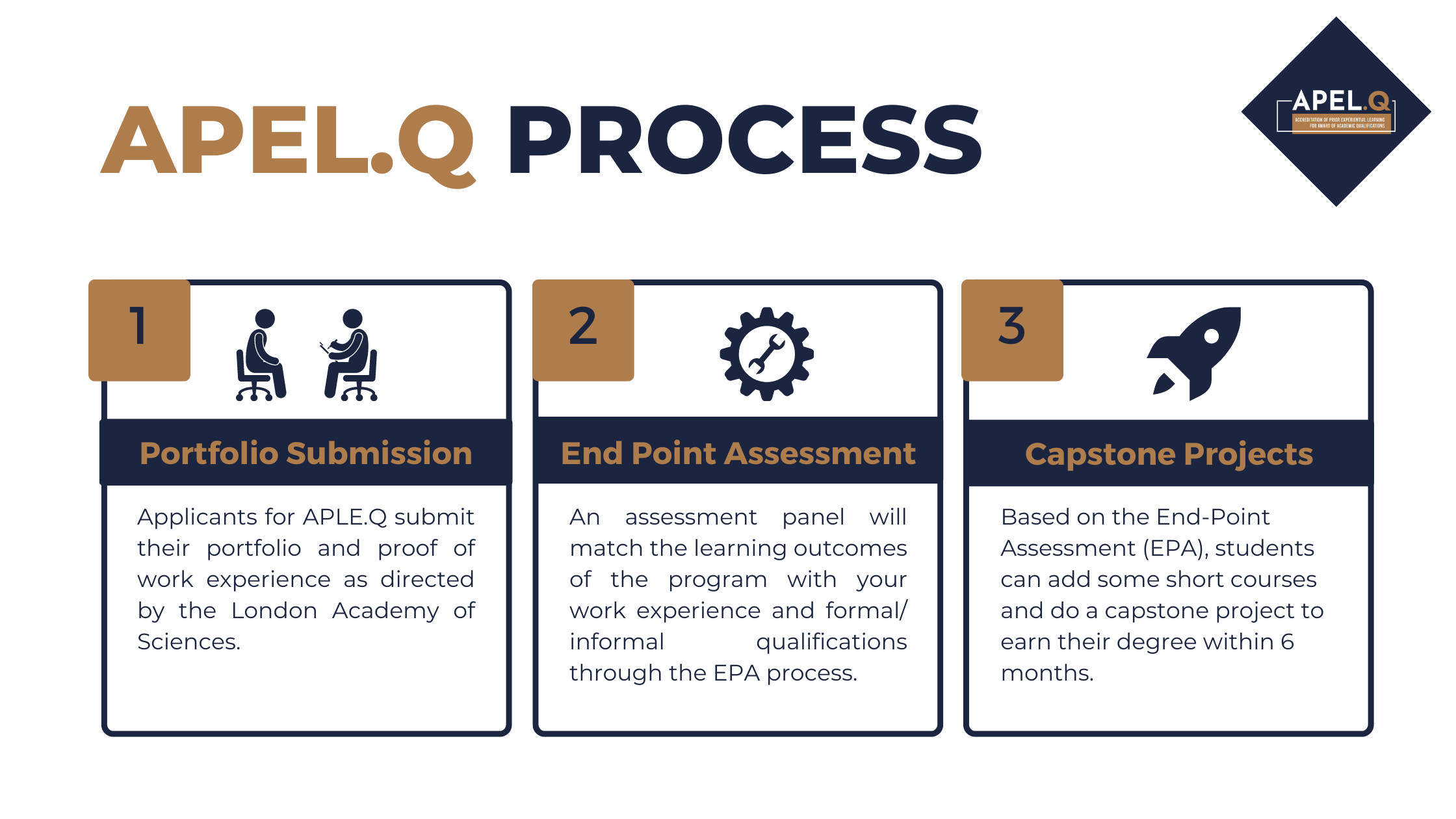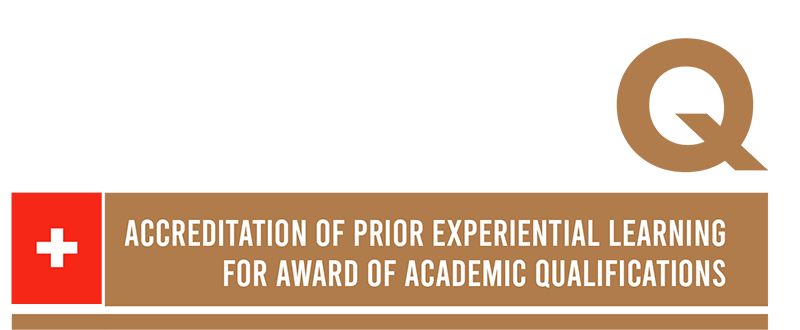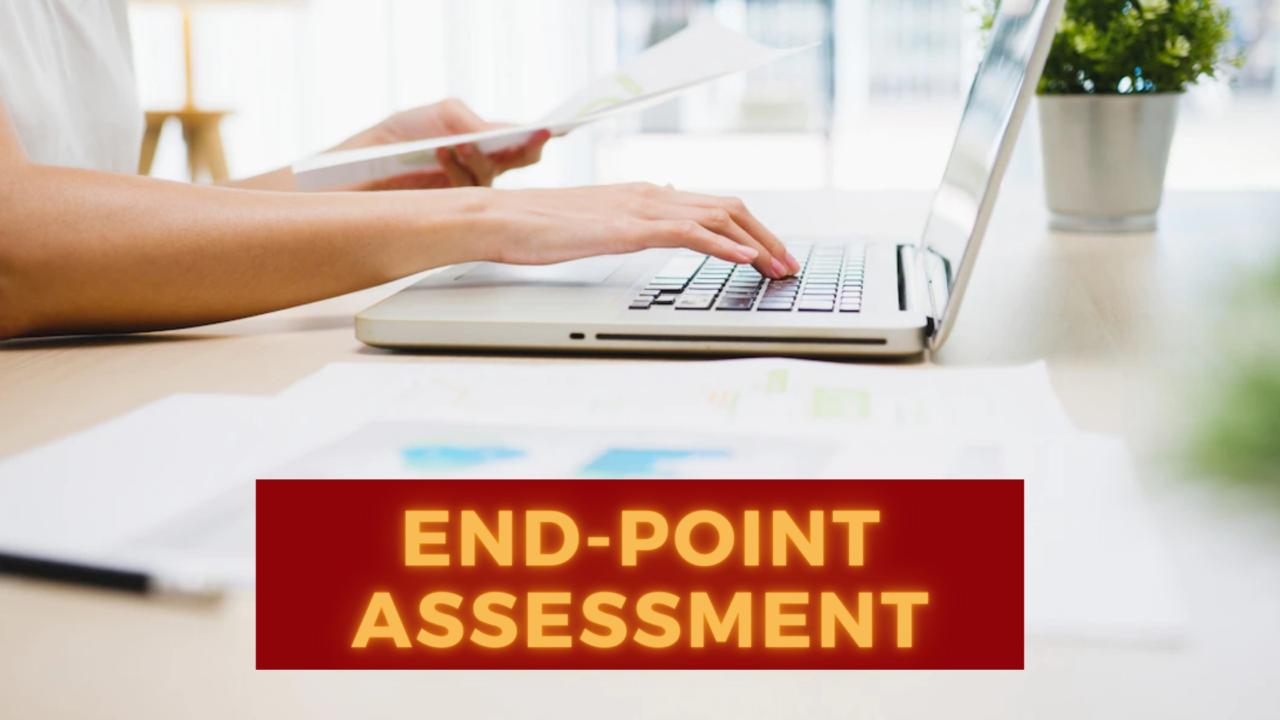APELQ is a new concept established in recent years. Nevertheless, due to the practical value it brings back, the program is implemented and recognized worldwide by top-qualified institutes.
HomeTagAssessment Archives - APEL.Q
APELQ is a new concept established in recent years. Nevertheless, due to the practical value it brings back, the program is implemented and recognized worldwide by top-qualified institutes.
APELQ is a new concept established in recent years. Nevertheless, due to the practical value it brings back, the program is implemented and recognized worldwide by top-qualified institutes.
APELQ is a new concept established in recent years. Nevertheless, due to the practical value it brings back, the program is implemented and recognized worldwide by top-qualified institutes.
APEL.Q procedure contains three (3) steps in awarding the academic qualifications: portfolio submission, end-point assessment, and Capstone Projects. Additionally, the Portfolio is compiled by the student to demonstrate that the learning acquired is pertinent and specific to the program’s body of knowledge or competencies.
This article will discuss the first stage – portfolio submission and the categories of evidence attached to the document.
Portfolio Submission – The first step of applying to APEL.Q
After filling out the application form, candidates are emailed to complete the Portfolio, evidence documents, and previous learning experiences in the first step of submission. Later, candidates should meet the end-point assessment in the second phase to give the institution a general view of the working/learning process, fulfilling all the program learning outcomes (PLOs) needs.

When submitting the submission, learners will be provided with an APEL.Q portfolio template to present evidence in the attachment file via email. This template will include information about the program under consideration as well as a mapping of individual learning (learning statements and the origin of learning supported by documentary evidence) to the program’s body of knowledge/ competencies.
Requirements of Portfolio Submission
For the portfolio content, various learning experiences should be listed and supported by documentary evidence, which will be mentioned in the following session. Students must meet these two requirements when submitting their Portfolio for APEL.Q:

- The application form is filled out accurately.
- The deadline for submitting the documentary evidence is satisfied.
Students should check the email clearly, noting the time and deadline to ensure all the required documents are on time. Consequently, you will be able to continue processing only if the documents are submitted before the deadline date.
Types of evidence for students to submit
The Portfolio is a formal document containing evidence documenting a learner’s prior experiential learning acquired over time. This education may be formal, informal, or non-formal, listed in 2 types of evidence below.

Students can submit either direct or indirect evidence, considered different sorts of evidence. Combined effectively, two types of evidence can benefit candidates in scoring and providing a better explanation to the assessment panel.
1. Direct evidence in the Portfolio
- Certificates: Students can provide copies of their qualifications, diplomas, or certificates from schools, institutions, and classes of competencies. A few instances in reference for students can have a look: School certificates, statements of results, and courses completed at workshops.
- Work Samples: Another type of direct evidence is working samples. Those files are recognized as your experiences and competencies approved in the acceptance of learning outcomes. The following are considered samples: Drawings or photographs, reports, written materials, projects, objects, and works of art.

- Records of workplace activities: Any products or services you performed while working could be mentioned and attached to the related session. The papers would demonstrate the skills and knowledge applied through those activities. Examples include notes, emails, completed worksheets, workplace agreements, and contracts.
- Documents: Along with work activities, your life experiences are also accredited as evidence. These documents can refer to media articles and meritorious awards.
2. Indirect evidence in the Portfolio
- Written Records: In life experiences, students can also submit copies of diaries, records, journals, and articles.
- Email: along with working activities reports, you can also provide copies of correspondence from your customers or co-workers. This information can demonstrate how you interacted and collaborated with others. Some instances that could be mentioned are copies of email communication which verify customer feedback, work activities, and written skills.

- Supporting letters: Your employees and co-workers are a special force that could improve your portfolio credibility. You can provide notes to verify your claim from employers, community groups, or people you have worked with (paid and unpaid work).
Conclusions
In brief, portfolio submission is the first step in applying for APEL.Q, which must be completed before proceeding to the next steps. The Portfolio could be submitted in various forms of evidence of experiences and demonstrated competencies, from direct to indirect, to be evaluated.
Accreditation of Prior Experiential Learning (APEL) for Qualifications (Q) is the awarding of academic qualifications to individual learners based on the evaluation and assessment of prior experiential learning toward fully recognized programs. Learn more about APEL.Q here.
You can connect with us through these links for a free consultancy with APEL.Q and registration.





